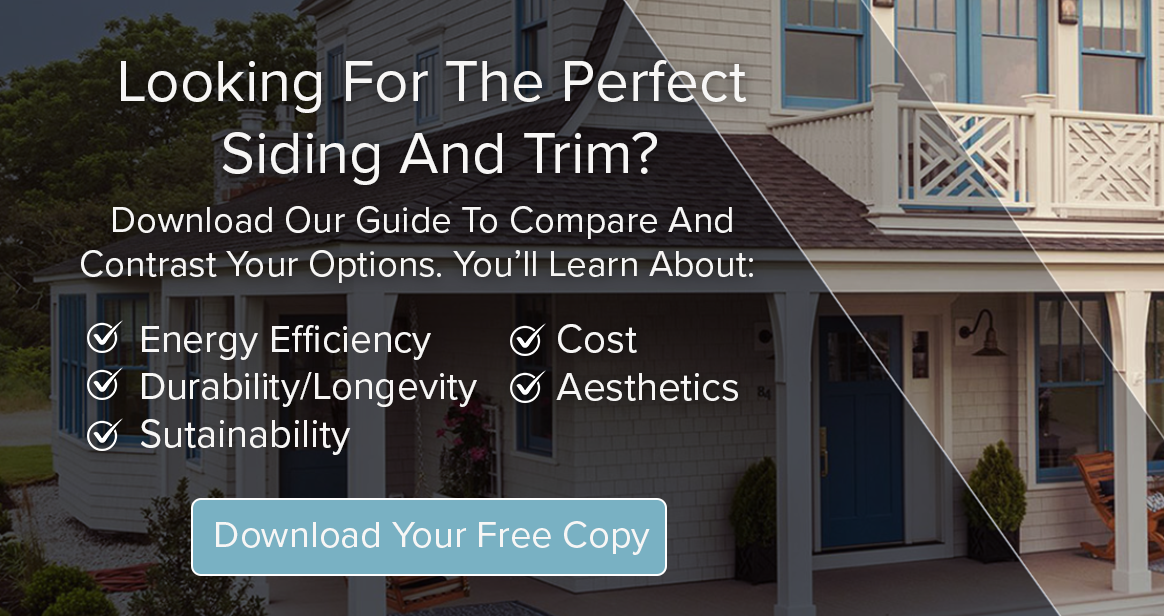The idea of “home” is changing. Homeowners no longer view their homes as the isolated space contained within four walls and a roof. In today’s world, “home” also includes the world at large, and new homeowners have made sustainable building one of their top priorities. Potential customers want to be sure that the architects or builders they partner with take green building as seriously as they do.
As home designers, builders, and engineers, we play a very important role in this eco-friendly evolution. By incorporating more sustainable and less-impactful materials into the design and construction of your projects, the following outcomes are possible.
- Meet the requirements of various green building certifications such as LEED, BREEAM and FSC
(more on that later). - Serve more clients by offering the eco-friendly options they’re looking for.
- Contribute to the preservation of this large home we all share (hint: it’s the planet).
Any Developer can Work with Sustainability
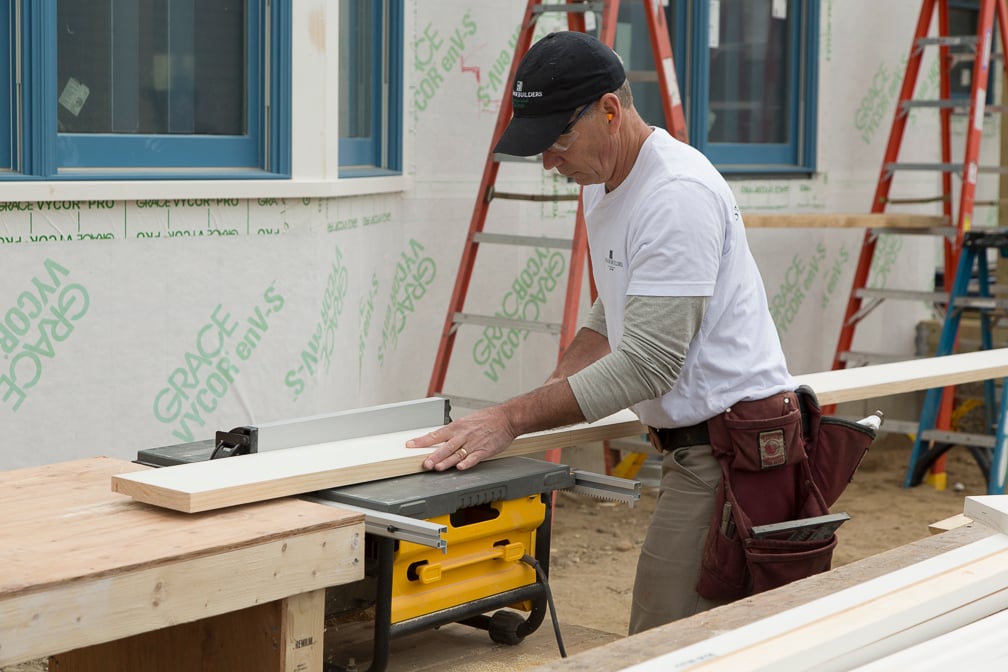
Eco-friendliness can be included in projects that are both profitable and sustainable. It aligns with much of the criteria we traditionally associate with successful building projects, such as ease of installation, durability, cost efficiency, and manageable maintenance.
Why do ecological projects seem so challenging? Many of us perceive them to be
- Prohibitively expensive
- Much more complicated than typical builds
- Difficult to facilitate quickly and easily
The truth is that with the right tools and information in your back pocket, managing environmentally sustainable housing development is attainable for any builder! Are you ready to find out how? Let’s look an incredibly important process: the why.
Green Buildings are a Win-Win-Win Scenario
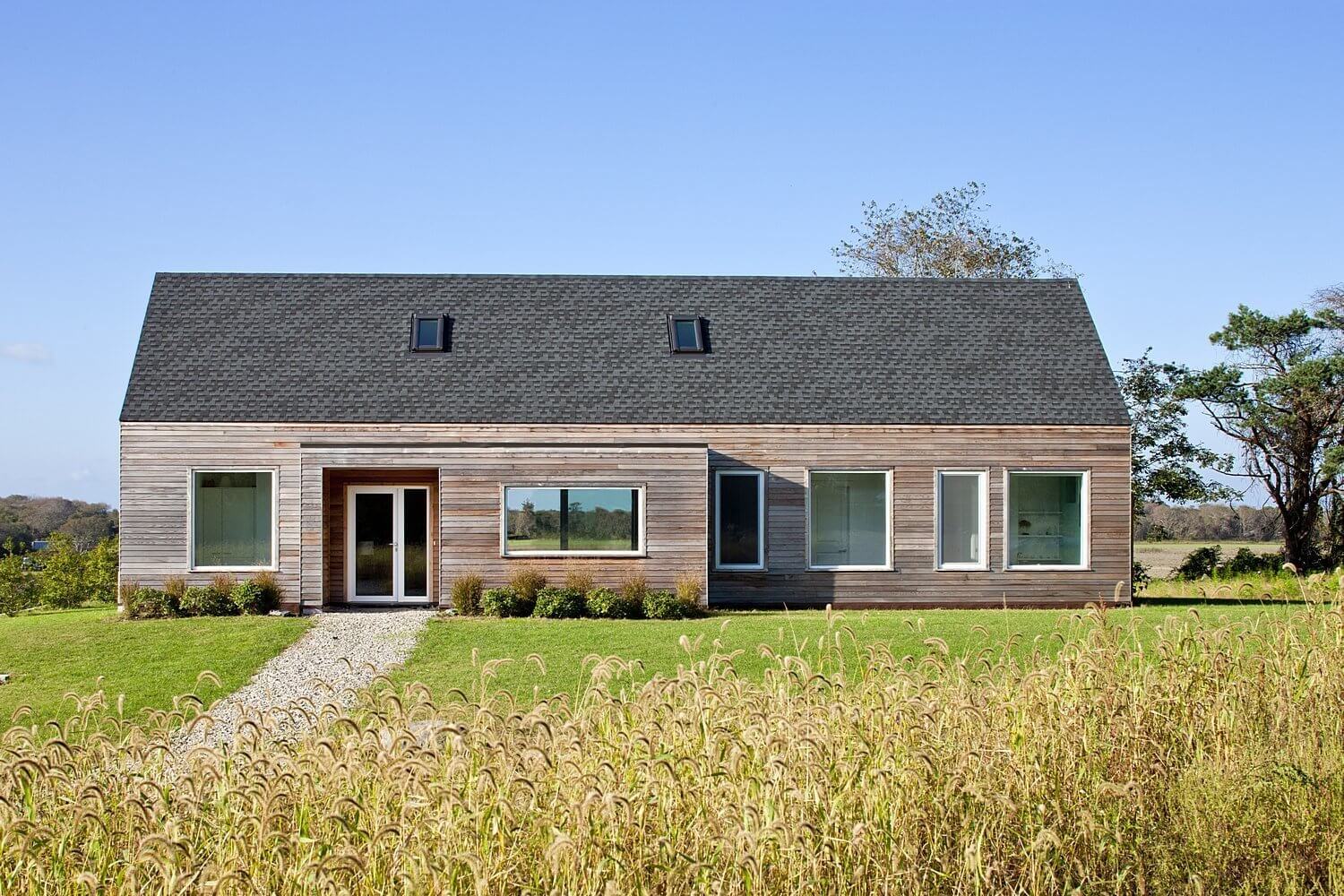
Source: Dwell.com
Environmental building practices are clearly better for the planet, but they also offer big benefits to developers and builders as well as the actual homeowners and their communities.
For example,
- Green buildings have higher property values; we’ve even seen examples of increased asset value of 10% or more
- LEED buildings can result in 20% lower maintenance costs than comparable buildings
- LEED-certified buildings in Los Angeles yield an average increase of 34% in rental fees over their non-LEED certified contemporaries
While it might take a little bit more effort to employ for your organization, the end results are worth it for your customer’s experience, your bottom line, and the bottom line of the environment.
How to Migrate Towards AN Environmentally Friendly Building Model
Obviously, there are many benefits to leveraging eco-minded building methods, but it doesn’t require the dramatic shift you may be imagining. We’re going to focus on one of the simplest ways to incorporate more sustainable practices into your builds: eco-friendly siding and trim. The first step is to ensure a common understanding of what qualifies as “eco-friendly” so we can take a more honest look at some of the materials we routinely use and determine their real impact on the environment.
One of the most challenging aspects of incorporating eco-friendly design into your portfolio is whether or not materials that claim to be eco-friendly actually meet that definition. We’ve put this article together to help you understand what to shoot for and to debunk some of the common hidden environmental costs we all wind up paying.
What is "Eco-Friendly" Siding & Trim?
Eco-friendly siding and trim is made of materials that don't have a negative impact on the environment in their manufacturing and construction processes. Some of the most basic factors of an eco-friendly trim material include
- Resources such as water and energy were conserved during the entire harvest and/or refining process
- Air, water, and land pollution was minimized throughout the material’s journey
- The manufacturing process was considerate of environmental and human safety
- The materials are sustainably produced so they don't detract from ecosystems
- The materials are often grown without toxic pesticides or herbicides, made of recycled materials (e.g., wood, metal), and/or are biodegradable (i.e. they can be broken down by natural decomposition at the end of the product lifecycle)
We want our homes to last a lifetime, but we have to balance that need by using the right materials can help protect the environment for generations to come.
What Factors Do You Need to Help Your Customers?
.png?width=936&name=lca-product%20(1).png)
Source: saint-gobain.com
As an architect or builder, there's more than meets the eye when choosing trim materials. While most professionals are aware of basic concepts within the sustainability movement, such as energy conservation and pollution reduction, there are many more factors to consider for a holistically environmental approach.
Material
Eco-friendly siding materials are biodegradable, come straight from nature, and meet green certification standards.
Labor
Ecological trim material considerations don’t just stop with responsibly sourcing renewable material; they also consider the energy and labor required for transport and installation. For example, it takes more energy and resources to transport and install stone than wood.
Energy efficiency
The R-value of a construction material indicates how well it preserves thermal heat. Siding and trim with a higher R-value has better insulation quality and can help save on heating and cooling costs in the long run. The good news is that many ecological options have a fantastic R-value.
Recyclability
Siding and trim material that's made from recycled materials and/or can be recycled at the end of the product means less waste and has a smaller carbon footprint.
Manufacturing process
Some manufacturing processes can be quite energy-intensive or can create toxic by-products.
Source
Transporting materials over a long distance is both environmentally and financially expensive. Using locally sourced siding and trim can help reduce the environmental impact of transporting the materials to the construction site. However, when locally sourced materials are not an option, shipping large quantities of materials together on a vessel reduces the amount of fossil fuel therefore reducing carbon footprint..
Carbon Footprint
Some siding and trim material can even pull double-duty. For example, trees remove carbon dioxide from the atmosphere, and then they store the carbon in their second lives as wood trim materials, reducing their overall carbon footprint.
Selecting the Best Eco-Friendly Siding and Trim Materials
While it may seem like there is a lot to consider when choosing a siding material, a little due diligence can go a long way in selecting a product that will benefit the environment and give your customers peace of mind about their building choices. As a community of builders, we owe it to ourselves, our customers, and our world to make responsible choices that reduce pollution, produce less solid waste, and use fewer ecological resources than other materials.
Here is an honest look at some of the most common types of siding materials and some of the hidden costs and benefits of using them for building projects.
Wood Siding & Trim
Wood is a top eco-friendly siding and trim material for many locations and project types. It comes directly from nature and is sustainable, recyclable, and renewable.
Pros:
- With so many different wood options, such as Cedar, Pine, Mahogany, Fir, Hemlock and more, wood is versatile and adaptable to a wide range of aesthetics, tastes, and styles.
- The materials are easy to install and energy-efficient, while the transportation and manufacturing processes are typically eco-friendly.
- It can be used in different climates and modified on-site to meet specific requirements.
- It has lower "embodied energy" than most other siding materials, meaning it has a smaller carbon footprint throughout the entire product lifecycle.
- The manufacturing process generally produces lower greenhouse gas emissions and causes less air and water pollution.
- Some wood options are naturally insect- and moisture-resistant, requiring minimal treatment.
- The new trend in using salvaged or reclaimed wood in building projects, such as bark or burnt wood siding, reduces their impact even further.
Cons:
Not all wood materials are responsibly sourced, so you'll need to do your due diligence to find a reputable supplier. You can achieve this by choosing vendors certified by the Forest Stewardship Council (FSC) or the Sustainable Forestry Initiative (SFI).
PVC/Vinyl Siding & Trim
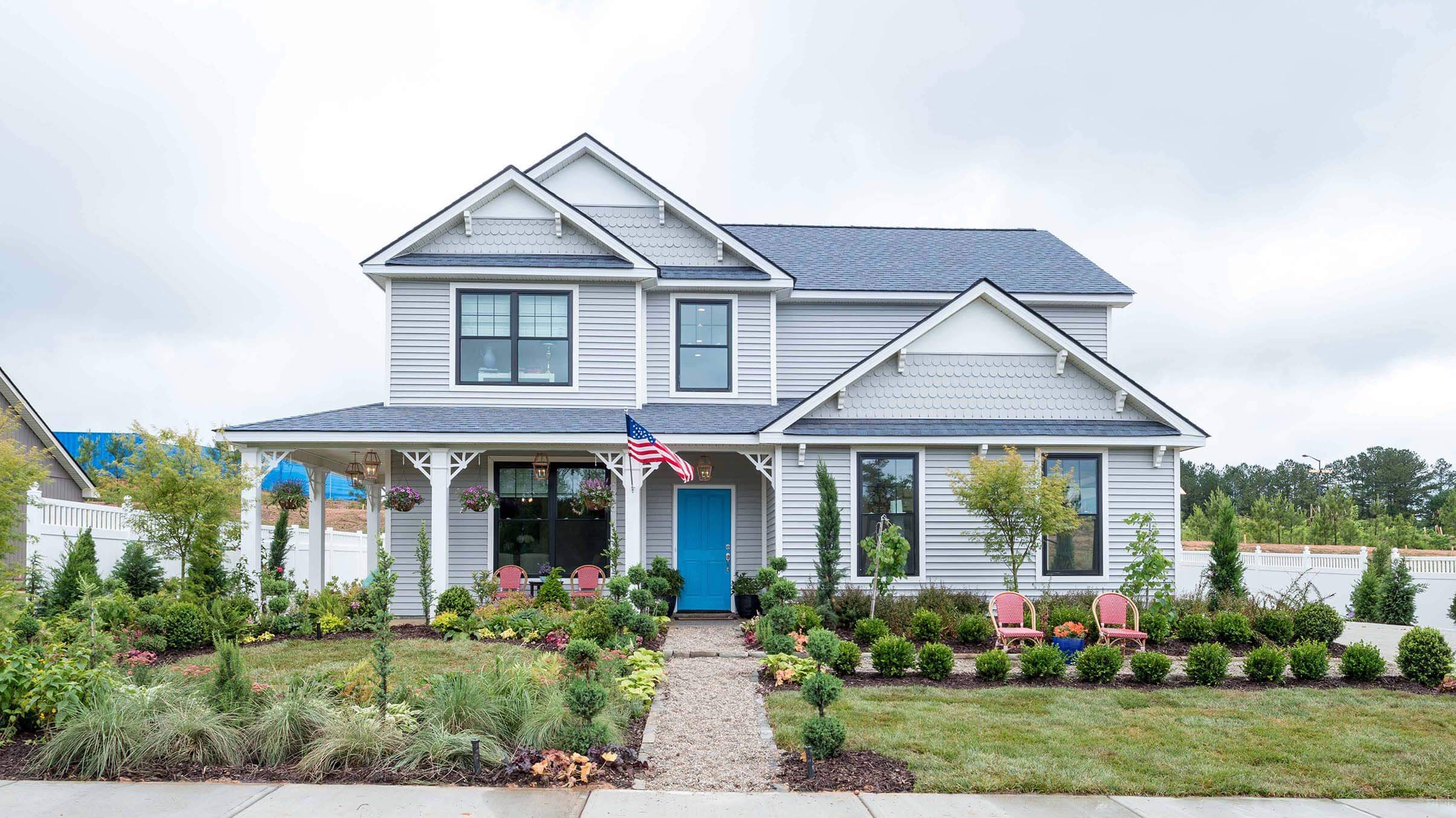
Source: certainteed.com
Vinyl is an incredibly common siding material, and we’re often asked to weigh in on its environmental impact.
Pros
- Vinyl siding and trim is widely available, very affordable, lightweight, easy to transport, relatively low maintenance, and easy to install.
- The manufacturing process produces little waste.
- Insulated vinyl siding and trim has a thick foam layer underneath each panel to increase energy efficiency, which reduces the long-term energy consumption of a building.
Cons
- Vinyl is made of Polyvinyl Chloride (PVC), which is toxic to the environment and humans. In fact, the Healthy Building Network labels PVC as a "not healthy" building material.
- The extrusion line takes a lot of non-renewable energy to run, meaning manufacturing has a big impact on the environment
- While vinyl siding and trim may have some environmental advantages over other materials, it's generally not considered an eco-friendly solution.
Fiber Cement Siding & Trim
.jpg?width=1489&name=fiber-cement-siding%20(1).jpg)
Source: mariosroofing.com
Fiber cement is often seen as the green alternative to vinyl siding and trim because it's made of sand, cement, and wood pulp.
Pros
- Compared to vinyl, it contains fewer dioxins, and no toxic fumes are emitted during the manufacturing process.
- Fiber cement can be made to look and feel like wood and used as a lower-cost alternative to wood in certain projects.
- The material can last for as long as 30 to 50 years.
Cons
- The manufacturing process uses a significant amount of energy and natural resources.
- The wood pulp often comes from various sources, so it’s very important to know you’re sourcing responsibly
- The use of material from many sources means it requires transportation from many geographical areas, increasing the fossil fuels needed for transport.
- Fiber cement contains silica, and cutting the materials releases crystalline silica dust. The particles emitted into the air can cause irreversible lung damage, lowering the eco-friendliness of this siding solution.
Fly Ash Concrete Siding & Trim
.jpg?width=1024&name=fly-ash-siding%20(1).jpg)
Source: greenenergytimes.org
Also known as flue ash, this is a by-product of coal burning plants that generate electricity. It is widely adopted (currently more than 75% of concrete in the US is fly ash) Here’s what you need to know:
Pros
- It can be less expensive than traditional concrete
- It is slightly less permeable than standard concrete, meaning it has more durability (especially in colder climates) and provides more consistent in-home temperatures
- The fact that it is a by-product means repurposing it for homebuilding saves it from landfills
- This also reduces greenhouse emissions and prevents it from being able to pollute the environment
Cons
- There is a slightly longer cure time for fly ash concrete, meaning extended labor investments
- Transportation of the fly ash requires additional use of fossil fuels beyond those necessary for traditional concrete
- Improper storage of fly ash can cause environmental hazards such as leaks into soil, water, and air
- It’s so new that long-term effects on air and inhabitants are currently unknown
Metal Siding & Trim
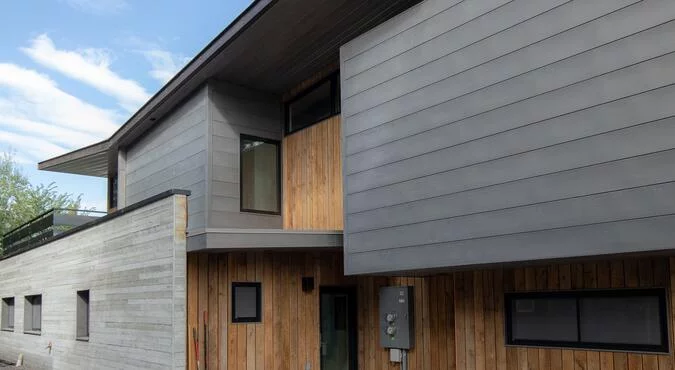
Source: bridgersteel.com
Metal siding and trim (such as steel or aluminum) is a popular option that balances cost with durability. Steel is considered a “greener” option than aluminum due to its recyclability.
Pros
- Metal materials are durable and easy to maintain, lowering the financial and environmental cost involved throughout the products' lifecycle.
- They can be made from recycled materials and can be recycled when they're no longer in use.
Cons
- The manufacturing process can require intense usage of fossil fuels (up to 140% more than wood)
- Metal siding and trim materials are more prone to dents, presenting potential maintenance issues.
- Some metals (e.g., steel) are quite heavy, so transportation over long-distance can be costly (and require a lot of fossil fuel), and the installation can be labor-intensive.
- Metal siding and trim isn't energy-efficient due to high conductivity, so additional insulation may be required for buildings in more extreme climates.
- Not all metal siding and trim manufacturing processes have a low environmental impact, so you'll need to do some research and find a supplier that meets your standards.
Brick & MASONRY

Source: 3rpcontracting.com
Fired bricks were invented in 3,500 B.C. and have been in a staple in homes ever since.
Pros
- An earthy, natural, and low-maintenance siding option made of clay, shale, and water, brick is low maintenance (e.g., no caulking or repainting required).
- Brick can last up to 200 years.
Cons
- Not all brick is recyclable.
- The manufacturing process requires fossil fuel of fuel to bake the bricks at over 2,000 F for several days.
- In addition to the resources necessary for baking bricks, weight significantly increases fossil fuels needed to transport.
Certifications to Know
If this seems like a huge undertaking, don’t worry; we’ve got you covered. We can work together to make small improvements that lead to big changes in the overall sustainability of your project. If you’re looking a good place to start, here are some certifications that ensure an eco-friendlier approach to building materials.
Leadership in Energy and Environmental Design (LEED) Green Building Certification
An internationally recognized system, LEED certification creates more attractive investments for clients due to reduced energy usage and increased resale value.
Building Research Establishment Environmental Assessment Method (BREEAM) Certification
BREEAM certification helps your clients balance cost with lifecycle value while reducing operating and maintenance costs and limiting developer and investor risks.
Forest Stewardship Council (FSC) Certification
The gold standard for lumber from responsibly managed forests, FSC-supplied building materials means your customers can rest easy about the source of the building blocks of their home.
Let’s Work on Our “Home” Together
Change does not come about all at once. It happens with every small step in the right direction until we’re all doing our part to protect the environment for ourselves and generations to come. So let’s start with those small shifts in siding and trim material that can make the difference between a constant struggle for survival and scarcity of resources by providing environmentally-friendly homes that meet your client’s needs and protect the bigger “home” that we can all enjoy together.

